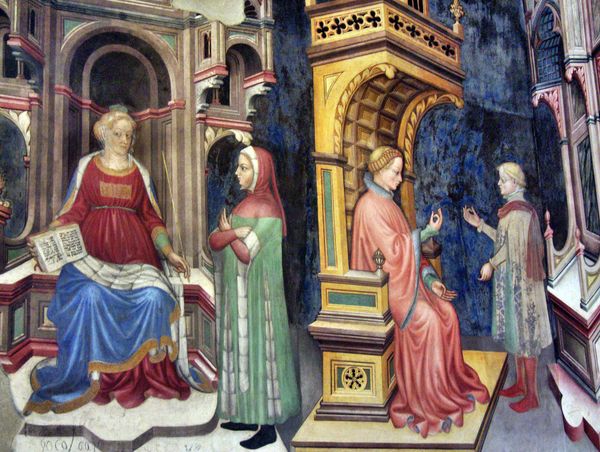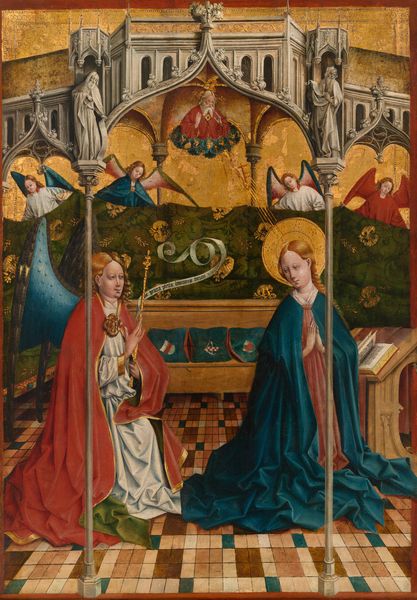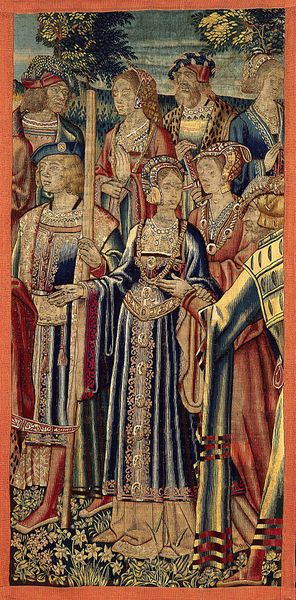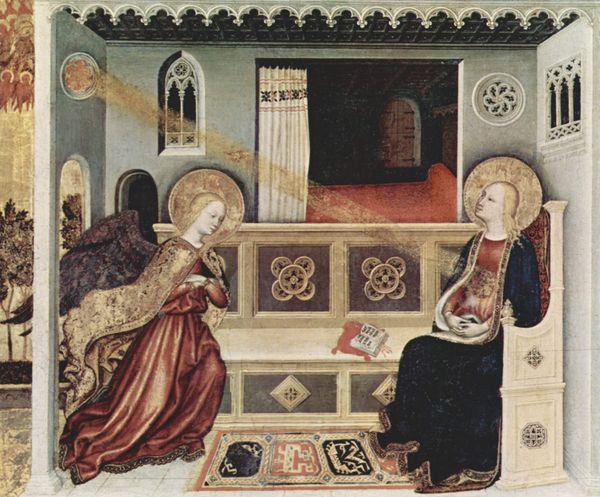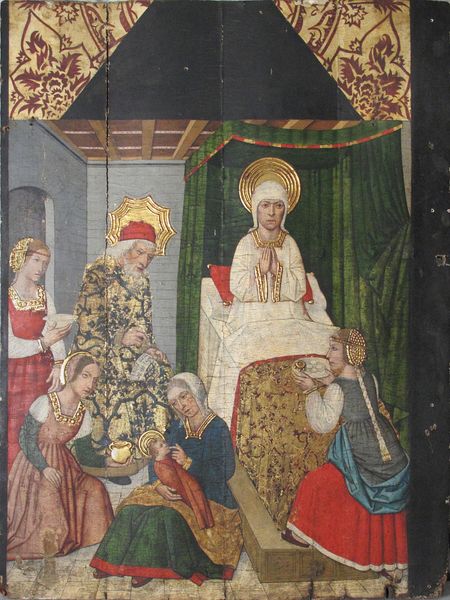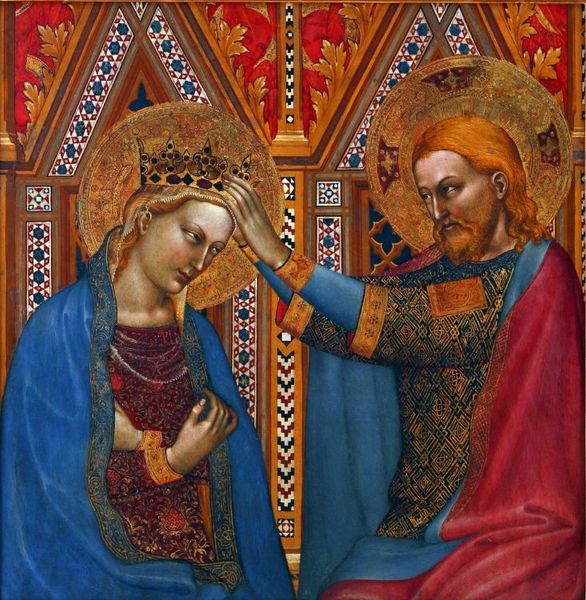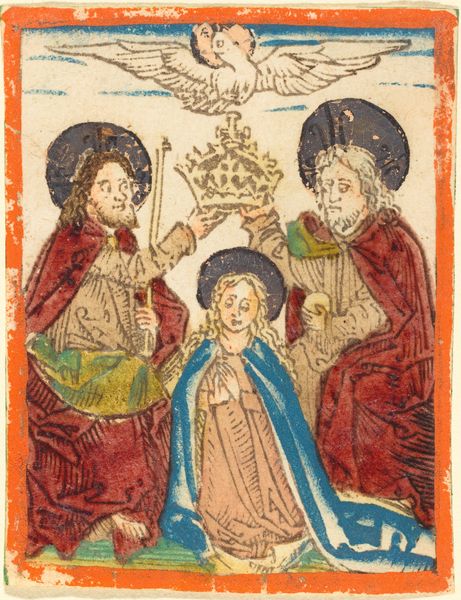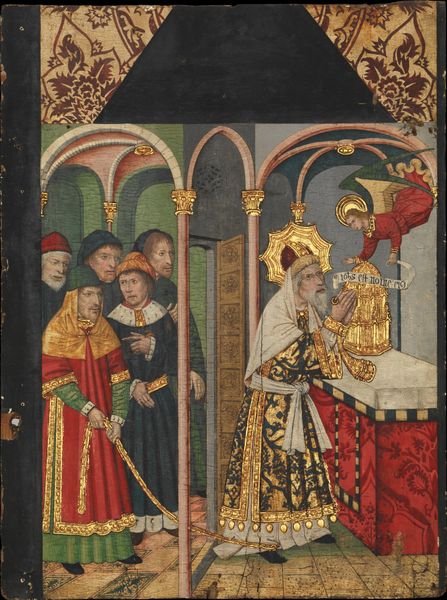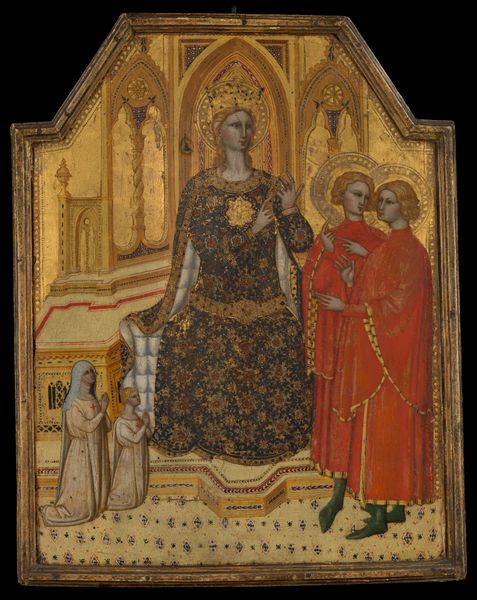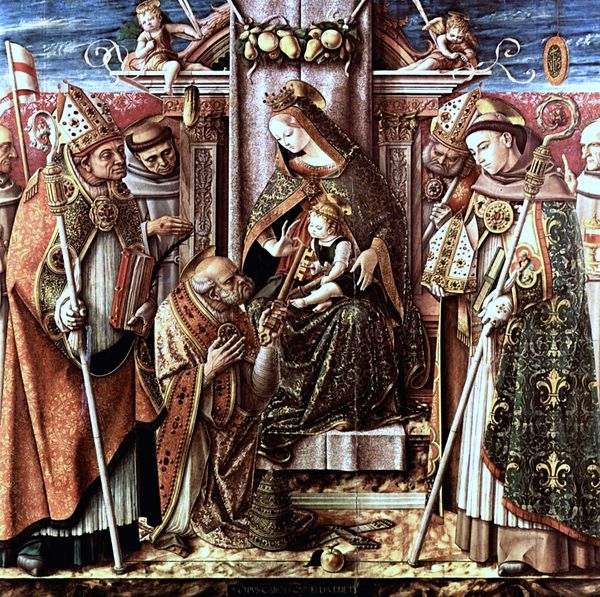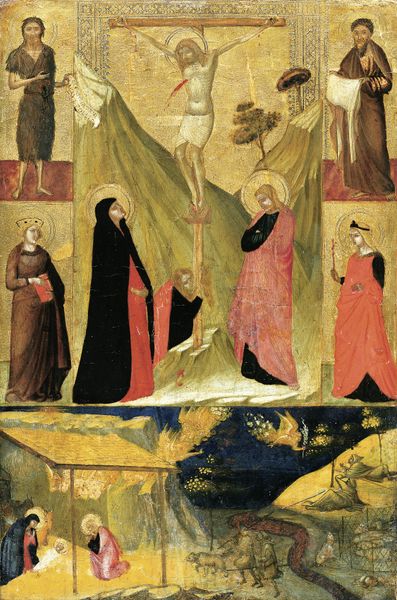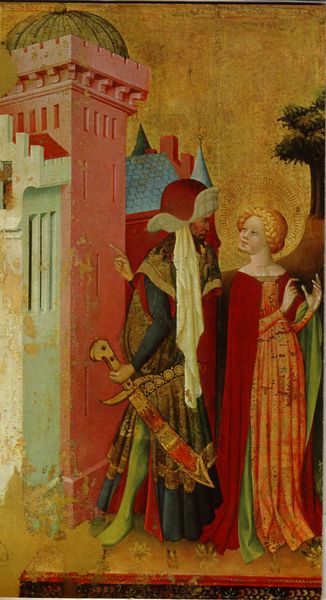
The Coronation of the Virgin, reverse_ Christ Carrying the Cross (fragment of an altar wing) c. 1350 - 1360
0:00
0:00
panel, tempera, painting
#
portrait
#
medieval
#
panel
#
allegory
#
tempera
#
painting
#
gothic
#
figuration
#
international-gothic
#
angel
Dimensions: 35.2 x 25.1 x min. 1.2 cm
Copyright: Public Domain
Editor: So, here we have an altar wing fragment from around 1350 to 1360, "The Coronation of the Virgin" attributed to an anonymous artist, crafted with tempera on panel. What immediately strikes me is the opulent detail and almost otherworldly quality, but I am not sure how to unpack its social relevance. What do you see in this piece? Curator: Beyond the beautiful gold leaf and intricate patterns, I see a potent representation of power dynamics in the medieval world. Notice how the Virgin Mary is being crowned, signifying her ascent, but within a system heavily influenced by patriarchal religious structures. Consider how the artist, in depicting this scene, is both reinforcing and potentially negotiating these societal norms. What does the act of Coronation imply about agency? Editor: That’s a really interesting point! I hadn't thought about how the act of crowning could be interpreted as both empowering and inherently tied to existing hierarchies. It also is relevant that there is an adjacent panel. How should we consider both representations in relation to each other? Curator: Exactly! This diptych actually demonstrates an important interplay. It’s essential to remember this wasn’t just about religious devotion; it was also about communicating specific socio-political ideologies. The pairing of the "Coronation" with Christ's suffering encourages reflection on the complex, often contradictory roles prescribed to men and women. Editor: So, the artist might be subtly critiquing or commenting on those roles? Curator: Precisely. This piece is more than just a pretty picture; it's a window into the power structures, gender roles, and the subtle ways artists engaged with those dynamics during the Gothic period. How does that revised view change your reading of its "otherworldly quality" which you identified initially? Editor: Wow, I was initially taken by the visual splendor, but now I see a much deeper layer of social commentary embedded within the artwork! Curator: Exactly, questioning our assumptions can allow us to gain access into new cultural understandings. It is about disrupting ingrained habits of thought!
Comments
stadelmuseum about 2 years ago
⋮
This panel fragment presumably came from a convent of the Poor Clares in Nuremberg. It is typical testimony to late fourteenth-century female mysticism. The front features ‘The Coronation of the Virgin’. The banderoles quote the ‘Song of Solomon’ and characterise Mary as Christ’s bride, a symbol of the church and a loving soul – a quality with which particularly women could identify. The back shows the extant upper section of a cross-bearing Christ as a kind of instruction in vicarious suffering. The panel was part of a tabernacle altarpiece whose wings flanked a central sculpture.
Join the conversation
Join millions of artists and users on Artera today and experience the ultimate creative platform.

